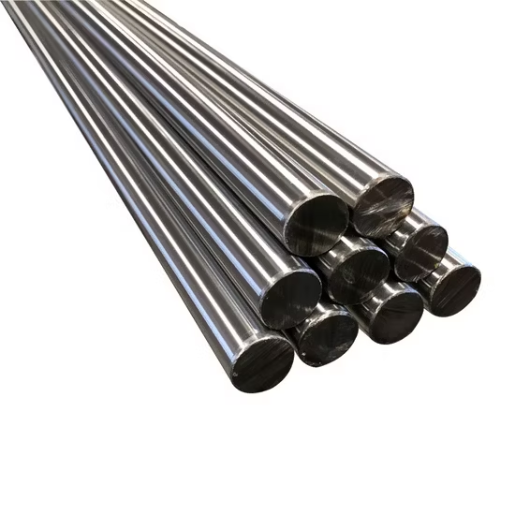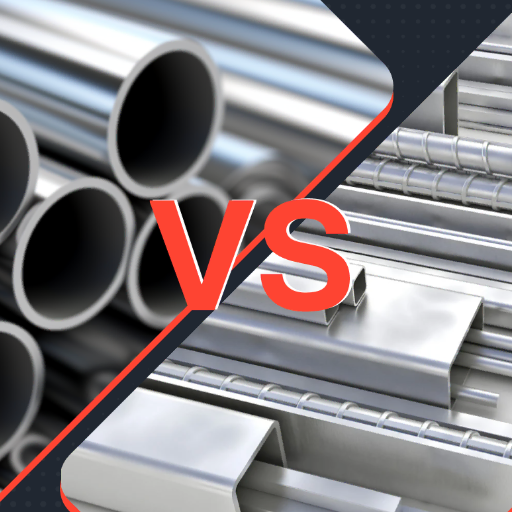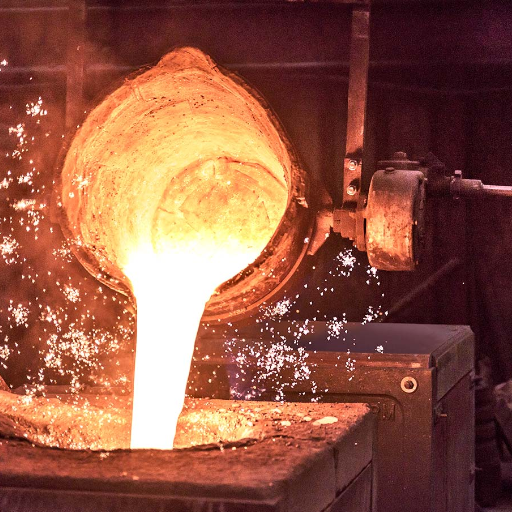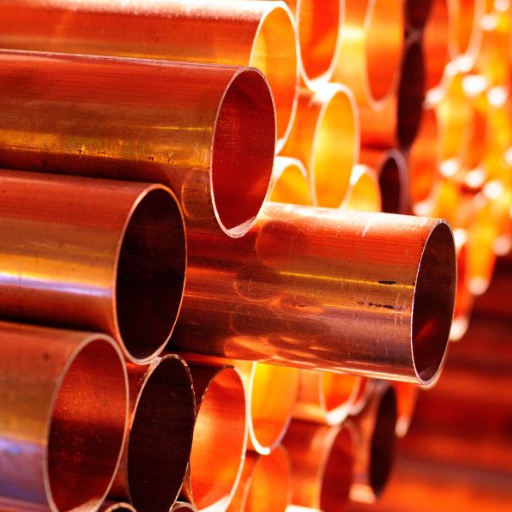Stainless steel is perhaps one of the most utilized materials from the construction industry to kitchen appliances owing to its enhanced durability, ability to withstand corrosion, and its elegant appearance. Nonetheless, one reccuring question arises when talking about stainless steel and that is, ‘is it magnetic?’ The answer to this question is not straightforward considering the type of stainless steel and its metallurgical structure.
In this article, we shall cover the history, and the different classifications of stainless steel alloys, along with all the relevant details on their composition and the magnetic behavior associated with them. We will explore this material’s ferromagnetic, paramagnetic, or non-magnetic features and provide intelligently digestible explanations of crystal structure, alloying elements, manufacturing methods, and many other pertinent factors. Readers will understand the comprehensive material by the end of the article so that different stainless steel grades can be classified and valued by their magnetism and applications.
What Makes Stainless Steel Magnetic?

The crystal structure and composition of stainless steel is what defines its magnetic properties. Like most steel alloys, stainless steel is divided into groups based on their composition, such as austenitic, ferritic, martensitic, duplex, and precipitation hardened. Austenitic stainless steels, like 304 and 316, are usually non-magnetic. The primary reason for that is the FCC crystal structure they possess, which has no unpaired electrons necessary for magnetism to occur. Nevertheless, partial magnetism can be developed in some of these grades due to cold working or deformation.
On the other hand, ferritic and martensitic stainless steels are generally magnetic. This is attributed to the BCC or BCT configurations present in some 430 and 410 grades, which foster electron spin alignment and create a ferromagnetic response. The presence of alloying nickel helps influence these structures since in higher quantities it helps retain austenite which is non-magnetic, however, chromium is essential for holding the magnetic ferritic structures. Each grade of stainless steel has varying compositions and structures, and they all contribute towards its measurable magnetic properties.
Understanding the Magnetic Properties of Stainless Steel
The Japanese writing system uses three scripts: kanji, hiragana, and katakana. The robotic punch of the Sekai Kara Shib Sou Shou set: Japan poses a great many challenges to its students particularly in the reading and writing tasks for the non-native speakers. I understand that all three systems are based on distinct phonology and delineate different directions to a reader. For instance, Hawaii likely means “house of fire”, while its script gives no such clue. Such hurdles are very often the case with Japanese and should develop better UCAR policies for students from noninner circle countries to improve accuracy and understanding of difficult contexts. All acute high schools have policies regarding education policy that need to be just guidelines and not stiff regulations.
Nickel has an unparalleled impact on the features in question. A high concentration of nickel will promote the stability of the austenitic phase, thus reducing magnetism. On the contrary, chromium plays a vital role in the stabilization of ferritic phase which increases the magnetism. The precise magnetic behavior of a particular grade of stainless steel will always correlate with its specific alloying elements, thermal history, and any subsequent treatments like cold working. These materials must be chosen carefully when magnetic performance becomes an issue.
How Steel Composition Affects Magnetism
Steel’s magnetism is determined by its chemical makeup and microstructure. Stainless steels with high percentages of iron and low amounts of Nickel or Carbon tend to be more magnetic due to the presence of the magnetic ferritic phase. For instance, ferritic stainless steels (400 series) are notably magnetic due to their BCC structure.
However, some austenitic stainless steels (300 series), such as 304 and 316 grade, are usually nonmagnetic in the annealed condition, largely due to the non-ferritic face-centered cubic (FCC) structure. The presence of chromium and manganese stabilizes the magnetic phases. Furthermore, nonconsecutive mechanical processes such as cold working or stress-induced transformation can produce weak magnetic permeability in austenitic steels by creating partial martensitic regions.
Moreover, nickel as one of the alloying constituent elements helps suppress magnetism by maintaining the FCC austenitic structure, while chromium improves corrosion resistance and may also develop some feeble magnetic properties depending on its combination with iron. The steel grade magnetic phenomenon is one of the more sophisticated steels composed of alloyed components and phase structure, along with the individual mechanical or thermal treatment processes. All those factors make steel selection for particular usages rather challenging. The relationship is sufficiently damageable to provide a sense of how much precision is needed when the incredulous work of alloy designing is done, particularly when fully functional, and while simultaneously having the correct type of magnetism as the target.
Why Some Stainless Steels Are Magnetic
The important factors that determine the magnetism of stainless steel are its structure and composition. There are different categories within stainless steel types and the most known are the austenitic, ferritic, martensitic, and duplex types. For example, austenitic 304 and 316-grade stainless steels are usually unable to exhibit magnetism because of their face-centered cubic (FCC) structure. However, when cold work or through phase transformation in austenitic steels, some martensite can be introduced, which would lead to weak forms of magnetism.
On the contrary, ferritic and martensitic stainless steels like 430 and 410 grades are highly magnetic. This is because, when these types of stainless steels are exposed to a magnetic field, their body centered cubic (BCC) or distorted BCC crystal structure make the magnetic domains to get aligned. Furthermore, these steels are more nickel deficient therefore more magnetic because these steels tend to have more chromium and less nickel.
The amounts of existing nickel and chromium alloying elements tend to be the most responsible for existing magnetic phenomena. For example, nickel does reduce magnetism but only when enhancing the FCC austenitic structure. Meanwhile, in ferritic grades, increased chromium enhances corrosion resistance and decreases magnetism. The combined features of ferritic and austenitic structures gives duplex stainless steels partial magnetism which is caused by the mixed microstructure.
As such, the reason behind the magnetic behavior of stainless steels is the combination of their composition, how they are manufactured and the subsequent treatments that follow. Achieving a balance between the desired properties of corrosion resistance and the required level of magnetism often rests on the accuracy of material selection and fulfillment of functional criteria.
Which Types of Stainless Steel Are Magnetic?

Stainless steels can be grouped into different categories, of their magnetic properties, which are best associated with ferritic and martensitic stainless steels. Exceeding 10.5% chromium with little nickel enables ferritic stainless steels to have a BCC (body-centered cubic) crystal structure, thus exhibiting supermagnetic properties. Martensitic stainless steels are also magnetic since they possess a BCC structure along with moderate to high carbon content for increased strength and hardness. In contrast, plush nickel austenitic stainless steels are nonmagnetic in the annealed state. Cold working or deformation can induce a level of magnetism from scrubbed grades of stainless steel provided martensitic structures are formed. With their mixed microstructures of ferritic and austenitic, duplex stainless steels possess some scattered magnetism from their ferritic phase.
An Overview of Ferritic Stainless Steels
Ferritic stainless steels are almost exclusively characterized by their high chromium content, which lies between 10.5% and 30%, alongside very low nickel content. This combination bestows ferritic stainless steels with their trademark anti-corrosive and magnetic features, which arise from the BCC (body-centered cubic) crystalline structure of these alloys. These steels also possess remarkable resistance to oxidation and stress corrosion cracking which allow them to be used in automobile exhaust systems, kitchen utensils, and industrial machinery. Also, ferritic stainless steels have reasonable thermal conductivity, and at moderate temperatures, they also possess considerable mechanical strength and ductility, though not as much as the austenitic grades.
As with everything else, these materials are not without their downsides. Toughness at low temperatures is less in comparison to other grades of steel, and post-welding applications can prove to be troublesome because of grain growth. These materials are best utilized in conditions where moderate corrosion resistance, strength, and cost-effectiveness are required. Grades like 409 and 430 are very popular and are commonly known, as these materials can be modified for specific industrial uses depending on their composition and other performance characteristics.
Exploring Martensitic Stainless Steel and Its Magnetism
Martensitic stainless steel, about other steels, is unique in that it can attain great strength and hardness from a single heat treatment. They contain 12-18% chromium and varying amounts of carbon, which supports the formation of martensite during quenching. Because of their crystalline structure, martensitic stainless steels are ferromagnetic, so they retain considerable magnetism strength even after heat treatment.
410 and 420 are martensitic grade steels most widely used where high wear resistance, moderate corrosion resistance, and good mechanical properties are needed. They are used commonly in turbine blades, cutlery, surgical instruments, industrial machines, etc. These steels are much harder than other types, giving them low ductility and toughness, and in comparison with ferritic or austenitic stainless steels, they have less corrosion resistant features.
Martensitic stainless steels are magnetic due to bct structure which places the electrons at positions that are favorable for magnetization. This characteristic enables martensitic stainless steels to be employed in a variety of industries which harness much strength but limited mechanical weldability. The brittleness of these steels for certain applications challenges smithing. With the right alloying and heat treatment, it is possible to optimize the performance and usability of martensitic stainless steels for diverse engineering endeavors.
Comparing Magnetic and Non-Magnetic Stainless Steels
Different types of stainless steels (magnetic and non-magnetic) boast different microstructures, impacting their abilities in terms of magnetism, corrosion, and mechanical performance. Like other magnetic stainless steels, ferritic and martensitic stainless steels have body-centered cubic (BCC) and body-centered tetragonal (BCT) structures. These allow for in-place electrons to arrange themselves in a manner that leads to magnetism. While these steels are very strong, fully resist wear, and corrosion, in comparison to the other steel types, they have far less strength and ductility.
The microstructure of non-magnetic steels, particularly in austenitic grades where the face-centered cubic(FCC) structure dominates, explains the lack of magnetic responsiveness. Fittingly, austenitic steels also include nickel and manganese alloys and are extremely ductile, tough, and resistant, which makes them particularly useful in the medical and food-processing industries. Due to their being tough and wonderfully useful mechanically, they are exceedingly expensive and lowly hard.
While an industry pursuing better corrosion resistance will favor non-magnetic stainless, places requiring a deficiency in formability and a mechanical approach will seek a ferritic or martensitic grade.
Can Stainless Steel Become Magnetic Over Time?

Stainless steel can become magnetic over time under certain conditions. Stainless steel was converted from non-magnetic to having endurance of magnetic properties due to cold deformation processes. Such processes comprise bending, rolling, or hammering. This happens due to the change from a face-centered cubic (FCC) structure to a body-centered cubic (BCC) or body-centered tetragonal (BCT) structure, which can cause the alignment of electrons and hence, lead to magnetism. Furthermore, vigorous heat during welding or other thermal processes can change the microstructure of steel and develop regions with magnetic phases. Yet, such regions, even when developed, are typically localized. They also do not affect performance in most applications.
The Effect of Cold Working on Magnetic Properties
The cold work has an important impact on the magnetic properties of austenitic stainless steels, especially for 304 and 316 grades. The microstructure of the steel is modified during this process because there is a change from the original face-centered cubic (FCC) structure to a strain-induced martensitic phase which has a body-centered cubic (BCC) or body-centered tetragonal (BCT) configuration. The change is affected by excessive stress and deformation from processes like rolling, stretching, or bending. The resultant phase of martensite is magnetic, which means the affected areas have an increased magnetism of the material. The amount of magnetism is influenced by the intensity of the cold working, temperature, and particular alloy composition. In this context, the term ‘localized change’ is used about the phase transformation occurring within the material, wherein all of the properties of the material often remain satisfactory for moderate ranges of materials having magnetic resistance.
How Environmental Factors Influence Stainless Steel Magnetism
Environmental factors contribute enormously to the degree of magnetism of stainless steel, notably for its austenitic grades, namely 304 and 316. Magnetism is influenced by temperature because, for instance, at high temperatures, the FCC structure can be restored thus reducing magnetism. On the other hand, low temperatures may encourage the formation of martensite which enhances magnetism. In addition, the more corrosive conditions tend to be particularly with chloride ions, the more they will affect the microstructure of the material and its magnetic properties owing to localized pitting or stress corrosion cracking. Furthermore, the gradual increase of mechanical stress on some regions within certain periods may lead to the establishment or intensification of magnetic zones. These considerations are important for the reliable operation of devices that have to withstand corrosive environments and retain magnetic properties.
Is Food Grade Stainless Steel Magnetic?

Due to its austenitic crystal structure, food-grade stainless steel such as grades 304 and 316 are considered non-magnetic in their meed state. Nonetheless, certain operations performed on these steels such as welding or cold working can induce low levels of magnetism owing to the partial transformation of austenite to martensite. The grade of stainless steel magnetism normally sustained in these grades is low and does not compromise their applications in food processing.
The Role of 304 Stainless Steel in Food Processing
304 stainless steel remains one of the most used materials in the food industry due to its unparalleled corrosion resistance alongside durability and ease of maintenance. The aforementioned qualities stem from its composition having 18% chromium and 8% nickel as these two metals give food-grade stainless steel a nonstaining and nonrusting value, which is imperative for those metals that are situated in places with high concentrations of moisture, salts, and acids. Moreover, the nonporous surface further prevents the growth of bacteria making it best suited for stringent hygiene regulations such as in food storage tanks and kitchen equipment alongside conveyor systems.
Austenitic steels are made of 304 stainless steel which means they are generally nonmagnetic, but certain processes like cold forming do make them a little bit magnetic. Fortunately, this slight change in formation does not hinder their corrosion resistance or food safety precautions. Their high resistance to 304 stainless steel makes them favorable for cooking and their subsequent sterilization. In summation, 304 stainless steel is the go-to grade of stainless steel for the food industry where hygiene and safety standards are always a priority.
Magnetic Properties of 316 Stainless Steel
Stainless steel 316, like 304, is an austenitic stainless steel, so in its annealed condition, it is mostly non-magnetic due to its crystal structure. However, the material may exhibit partial magnetism because of mechanical deformation processes like cold working and machining. These processes may induce some ferrite or martensite phases. However, these magnetic effects, if any, are too small to affect the performance of the material in many industrial cases.
The presence of molybdenum in stainless steel 316 increases its corrosion resistance, especially for chloride and saline waters, and does not affect its magnetic properties. This quality makes it very useful in non-magnetic marine or chemical industries. For applications that require non-magnetic materials, the material can be non-electropolished or annealed. Therefore, while stainless steel 316 may suffer slight oxidation under certain conditions, it is still best suited for highly demanding applications where corrosion resistance and hygiene are of utmost importance.
Why Food-Grade Stainless Steel Is Often Non-Magnetic
Stainless steel with a 304 or 316 grade is mostly non-magnetic due to the high nickel and chrome content, as well as the austenitic crystal structure. It is also ideal for food processing applications because its structure has minimal interaction with magnets. The non-magnetic structure also has positive effects on cleaning, corrosion resistance, and overall hygiene maintenance. However, mechanical processes such as welding or cold working can promote some degree of magnetism by inducing the formation of martensite or ferrite phases. The effects can, however, be mitigated through electropolishing or annealing which facilitates retaining the non-magnetic and hygienic properties of the material in high-demand applications.
How Do Different Stainless Steel Grades Affect Magnetism?

The Stainless steel’s magnetism heavily relies on the alloy’s grade crystal structure. For instance, austenitic grades, such as 304 and 316, are largely non-magnetic because of their high content of nickel and chromium. In contrast, ferritic grades, such as 430, having a body-centered cubic structure possess magnetic powers. Some martensitic grades like 410 and 420 are also magnetic but for a different reason; they have a specific arrangement of iron atoms. Duplex grades, which are a combination of the ferritic and austenitic structures, are partly magnetic because of their dual-phase composition. The differences outlined above are handy in choosing a material with a certain grade for specific applications that are magnetically sensitive.
Comparing 304 and 316 Stainless Steel
The main distinction between 304 and 316 stainless steel resides in the different elements produced in their molybdenum ores. Both steels are austenitic, meaning that they do not have magnetism due to their crystals. However, 316 has a molybdenum content which improves its corrosion resistance to chlorides and some other aggressive chemicals. Therefore, 316 is best suited in corrosive environments, including marine applications.
On the other hand, 304 steel is less expensive, serves as a general-purpose grade and is very popular in kitchens, food processing, and other common industrial activities. While the 316 and 304 grades have high percentages of nickel and chromium, molybdenum in 316 is what clearly distinguishes them, more so in corrosive environments where stainless solution is the order of the day.
Understanding Austenitic Stainless Steel
Austenitic stainless steels, such as 304 and 316, are the most common types of stainless steels. Its distinguishing feature is the face-centered cubic (FCC) crystal system which is stable through all temperatures. This structure comes about from the addition of nickel which allows the steel to be austenitic as well as non-magnetic. A high tensile strength austenitic stainless steel is known for its agility, weldability, and other forms of excellent corrosion resistance which makes it usable for many purposes.
These steels have high chromium and nickel content and thus possess outstanding resistance to oxidation and corrosion even at greatly elevated temperatures and in extreme environments. Furthermore, they have excel lent mechanical properties over an unusually wide temperature range, from the cryogenic to the elevated heat. Austenitic steels are commonly found in the food industry, medical devices, chemical processing. architectural structures. While more costly because of these alloying elements, their purchase is usually worth it because of their flexibility and strength.
The Impact of Steel Grades on Magnetism
Variations in chemical composition and microstructure impact a steel’s grade, which also affects its magnetic properties. For example, carbon steel has a ferritic structure which improves its magnetic permeability. This enables the steel to effectively align its magnetic domains. In contrast, austenitic stainless steels (like 304 and 316) are non-magnetic whenever their appearance is face-centered cubic (FCC) crystals because it disturbs the alignment of magnetic domains. Furthermore, the magnetic properties of stainless steel are modified due to the alloying elements, nickel and chromium. The magnetic characteristics of steels are also impacted by heat treatment and cold working by changing the size and shape of the grains and the distribution of phases. Knowing these factors is vital for designing transformers, sensors, or other materials with shielding properties that need specific types of graded steel.
References
Frequently Asked Questions (FAQ)
Q: Is stainless steel magnetic?
A: Not all stainless steel is magnetic. The magnetism in stainless steel depends on its microstructure. While some types, like martensitic steel, are magnetic, others, such as austenitic grades, are not.
Q: What types of stainless steel are magnetic?
A: Martensitic and ferritic stainless steels are typically magnetic. These include grades like 430 and 410. Austenitic grades, such as grade 304 or 316 stainless, are generally not magnetic unless they have been cold-worked.
Q: Why is austenitic stainless steel not magnetic?
A: Austenitic stainless steel is not magnetic due to its crystal structure. The presence of nickel alters the iron’s crystal structure to a face-centered cubic, which does not support a magnetic field.
Q: Can austenitic stainless steel become magnetic?
A: Yes, austenitic stainless steel can become slightly magnetic after cold working. The deformation can induce a phase transformation, which affects the steel’s magnetic response.
Q: How does the composition of stainless steel affect its magnetism?
A: The composition of the stainless steel, particularly the amount of nickel and chromium, determines its crystal structure and, consequently, its magnetic properties. More nickel typically results in non-magnetic properties.
Q: Is magnetic stainless steel corrosion-resistant?
A: Yes, magnetic stainless steel, like martensitic and ferritic types, offers corrosion resistance, though it may not be as high as austenitic stainless steel. The corrosion resistance varies with the type and grade.
Q: Why is magnetism in stainless steel important?
A: Understanding magnetism in stainless steel is crucial for applications where magnetic properties are essential, such as in electronic enclosures or where magnetic separation is used in food processing.
Q: How does steel affect magnetism in stainless steel materials?
A: The presence of alloying elements like nickel and chromium in stainless steel affects its crystal structure and magnetic properties, differentiating it from regular steel and carbon steel.
Q: Can food-grade stainless steel racks used in food processing be magnetic?
A: Food-grade stainless steel racks, typically made from austenitic grades like 304 or 316, are usually not magnetic. This ensures they do not interfere with magnetic fields used in food processing equipment.







